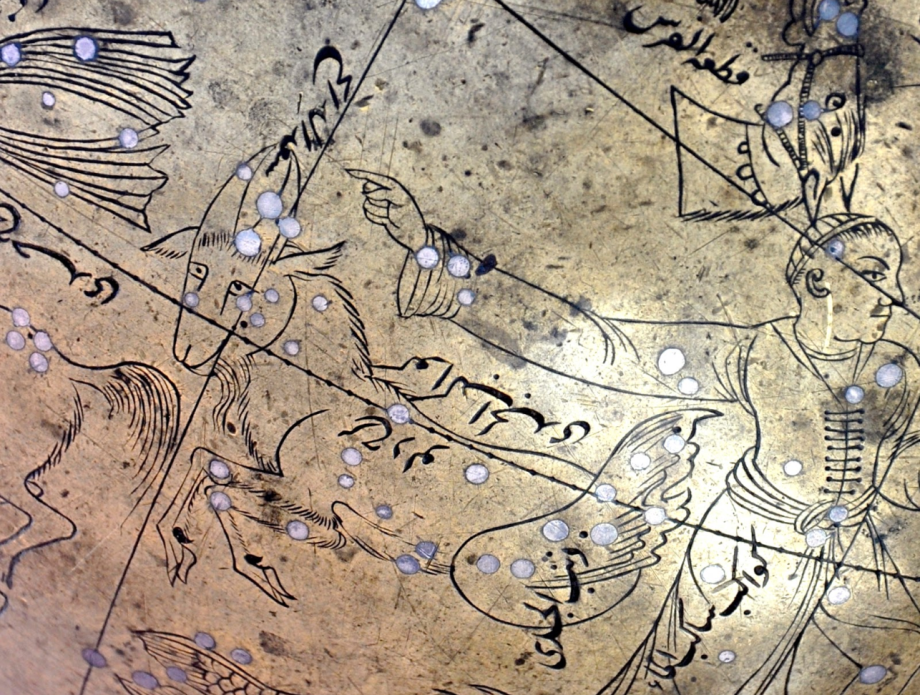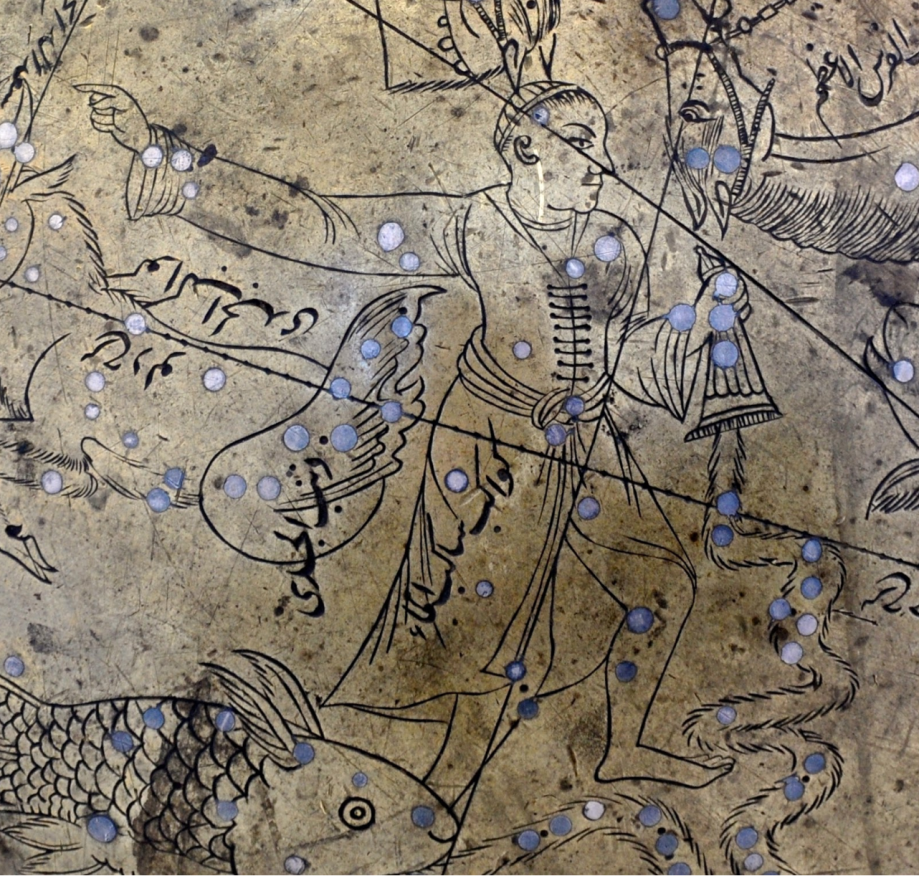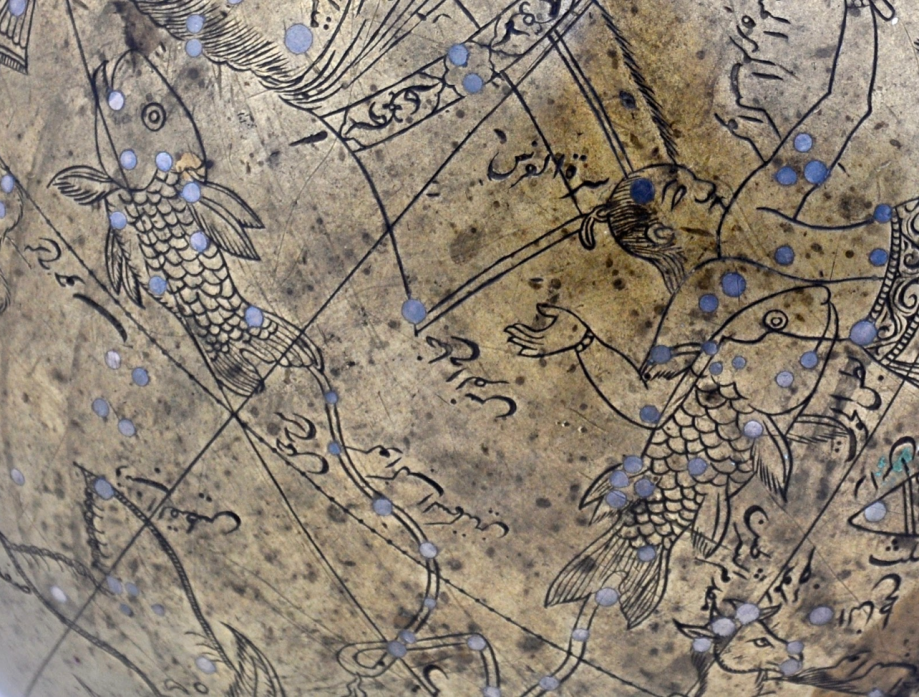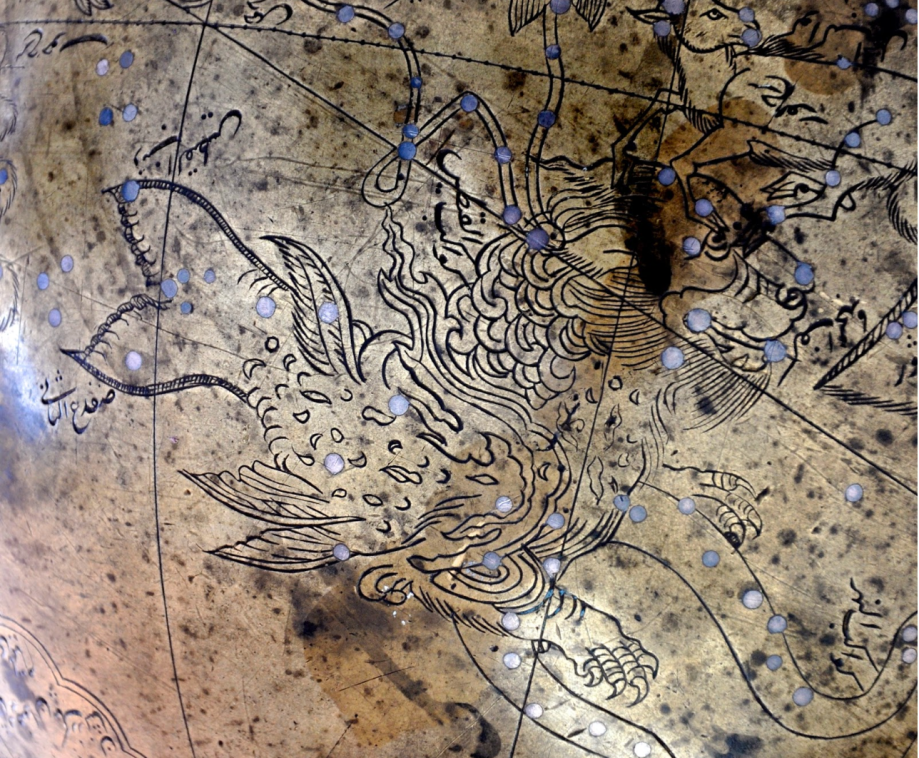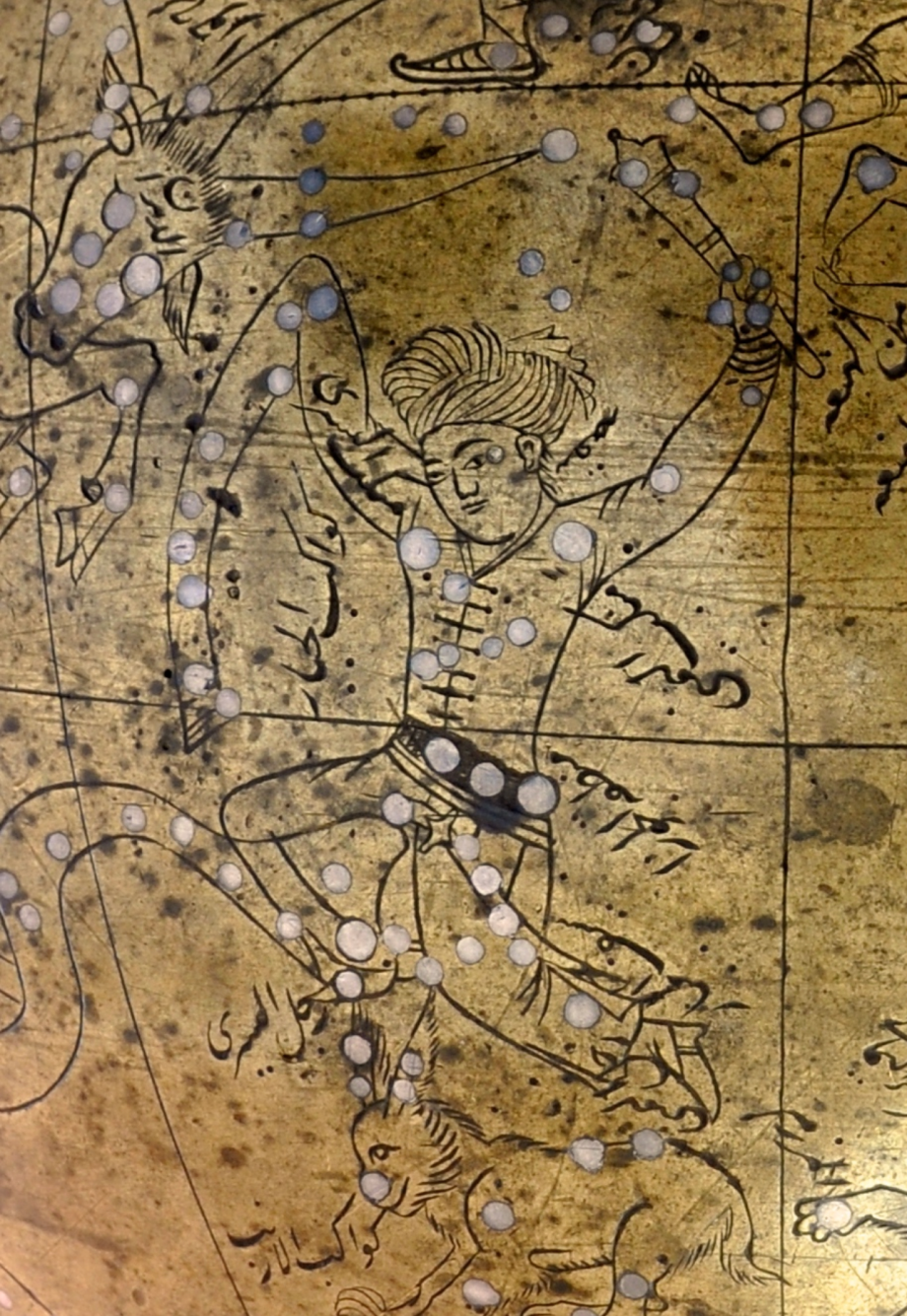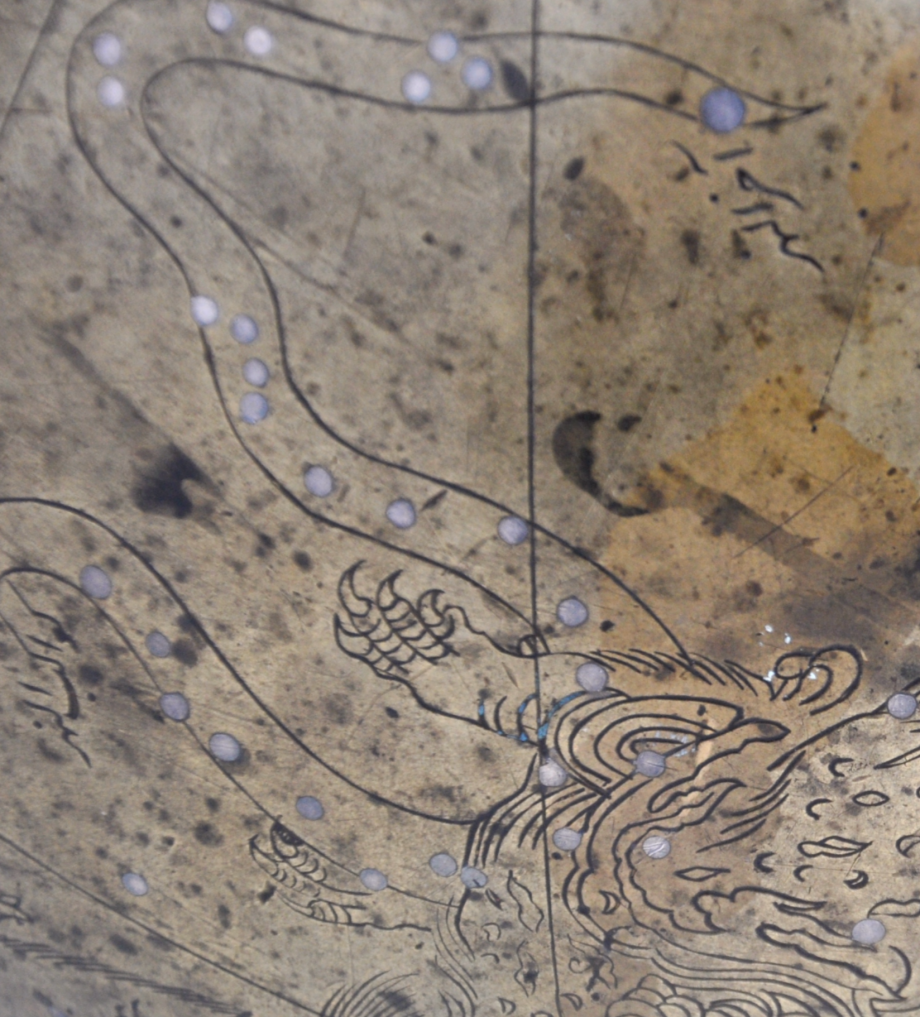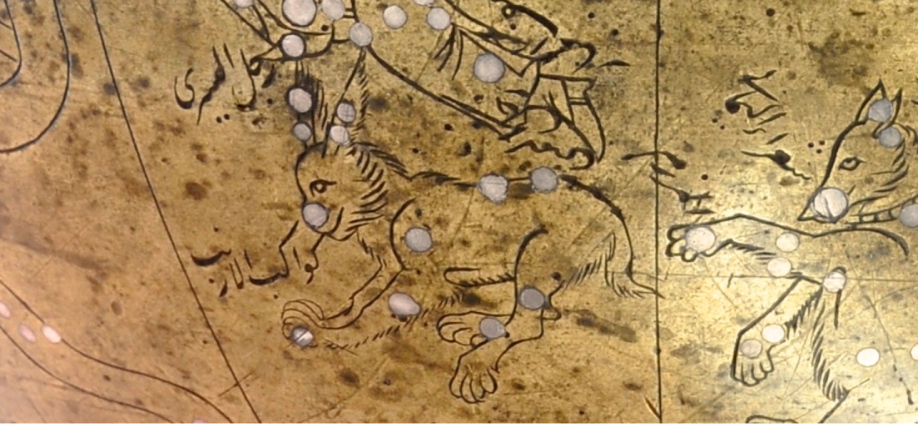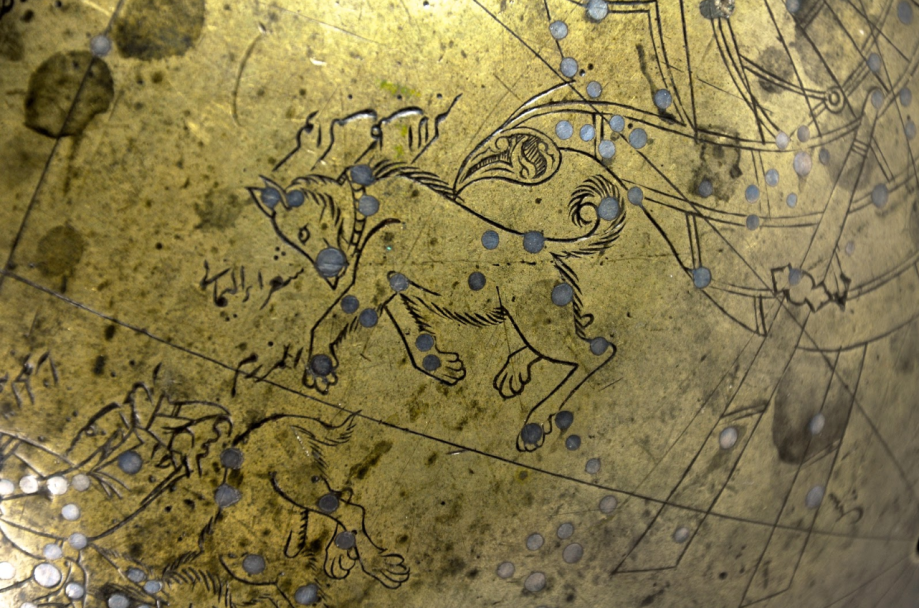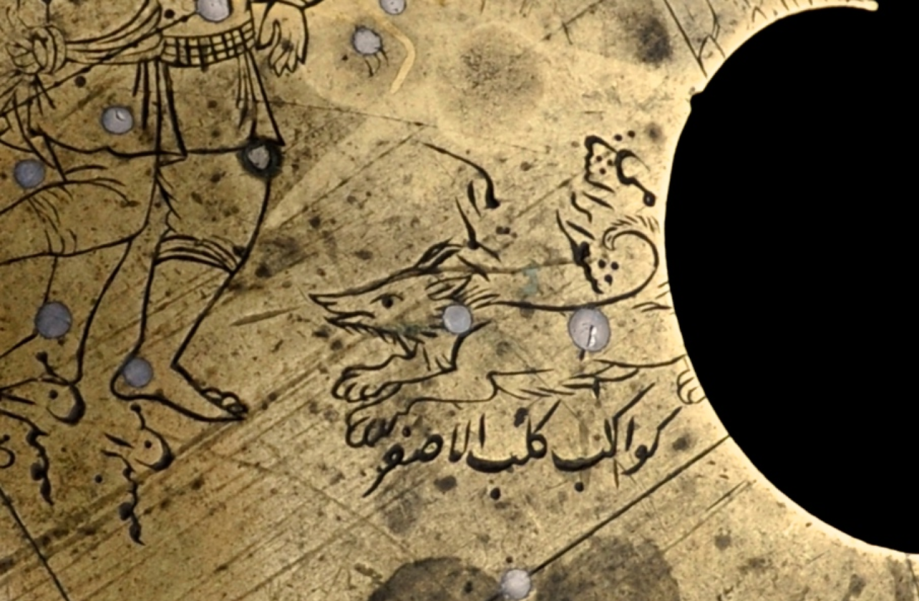
In Greek literature the Archer was frequently represented as a centaur, although this is not mentioned by Aratus, who says merely that when the sun scorches the bow and the archer it is a time of storm; the sailor should not sail at night but put into shore in the evening. This is one of the zodiacal signs that is probably of Babylonian origin. The Babylonian archer was depicted with wings, which in Greek times became a mantle or cloak. In Islamicate representations of the Ptolemaic constellation, there is usually a fluttering end of a head band or band of a turban, while al-Bīrūnī says he has long tresses. The mythographers noted that while some called it a Centaur others did not because centaurs did not use arrows. The legend given was that he was Crotus, son of Euphene, nurse of the Muses. He was very clever in the arts, for which reason the Muses requested Zeus to represent him in a star group. Zeus added the arrow to represent his keenness.
The title of the constellation on the Manuchihr globe is kawākib al-rāmī (the constellation of the archer). The star in the eye is labeled ‘ayn al-rāmī (the eye of the archer) and was considered nebulous [ν1,2 Sgr]. The star near the hoof of the lower front leg is labeled ‘urqūb al-rāmī (the archer’s tendon) [β1,2 Sgr]. Al-Ṣūfī says this important star was placed on astrolabes even though it is less than fourth magnitude, correcting Ptolemy’s magnitude of two. The star on the knee of the same leg is labeled rukbat al-rāmī (the archer’s knee [α Sgr]); Al-Ṣūfī also corrects its magnitude. The star at the southern tip of the bow [ε Sgr; Kaus Aust] is labeled zujj al-sahm (arrowhead).
